#european wildflowers
Text

Pulsatilla vulgaris
Photo by Steve Nicholls
#pulsatilla#pulsatilla vulgaris#european flowers#european wildflowers#wildflowers#pasqueflower#purple flowers#flowers#floral#purple#macro photography#flower photography#nature#plants#botanical
12 notes
·
View notes
Text


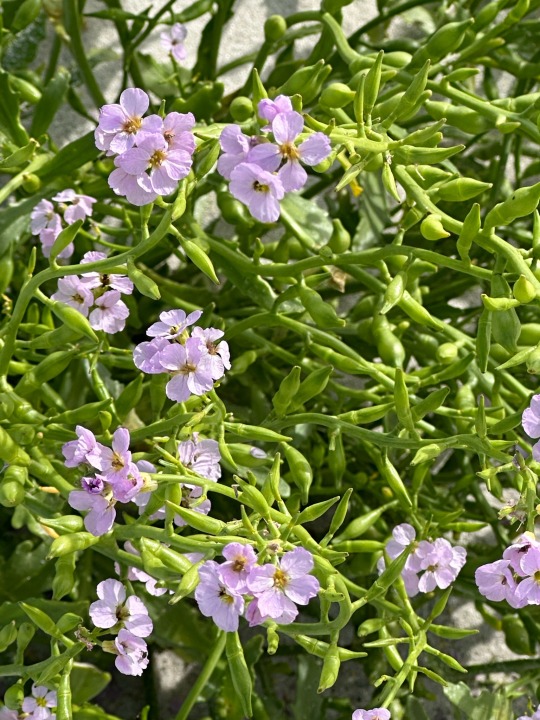

Plant of the Day
Sunday 10 September 2023
On a sandy beach in Orkney the Cakile maritima (European sea rocket) was filling the air with scent. This succulent plant is normally an annual but it can be a perennial. In some places such as coastal California this species is considered invasive.
Jill Raggett
58 notes
·
View notes
Photo
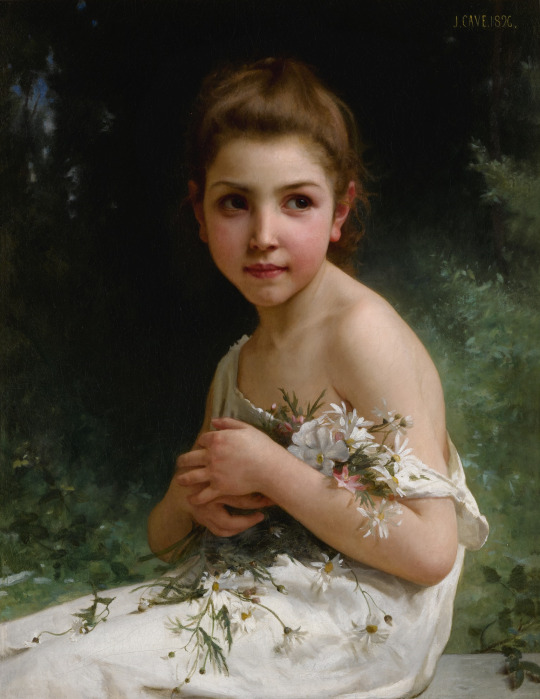
Jules-Cyrille Cavé (French, 1859 - 1946)
Wildflowers, 1896
#Jules Cyrille Cavé#wildflowers#art#fine arts#public domain#female portrait#portrait of a girl#french art#french#france#mediterranean#europe#european#european art#europa#flower girl
180 notes
·
View notes
Photo


European Hornet
Vespa crabro
Vespidae
Photographs taken on September 10, 2022, at Spadina Museum, Toronto, Ontario, Canada.
#wildflowers of southern ontario#insect#European Hornet#hornet#Vespa crabro#Vespa#Vespidae#Toronto#Ontario#Canada
7 notes
·
View notes
Text
Pagan ways to honor Palestinians
Like every other respectable human being these days I feel absolute terror, sadness and guilt seeing what’s happening to the PEOPLE of Gaza. Paganism has always been a way for me to deal with emotions and difficult things so I’m here to share what I’ve done and what I will continue to do to honor the people we have lost.
Of course donating funds, signing petitions, voting, protesting, talking about the genocide and boycotting is all a given but these are my spiritual/ grieving ceremonies. It’s important to balance both activism and the human need to grieve/ process in order to keep one’s humanity, avoid burnout and desensitization to this kind of violence.
Veiling
Veiling is a thing that some pagans do for all of their own reasons but I’ve found it to be a good way to honor others. If you veil with a kufiya, a historic scarf of Palestine this is also sending a message of exactly what and who you're standing for. I veil with a scarf that I inherited from my grandmother, like the martyrs of Palestine I never got to meet her, I never got the chance to know what she feared or what she loved. That symbol of loss and what could have beens’ remind me that we are all united in loss, we all are losing something through this genocide family, friends, lovers, coworkers, doctors, students, peers. Because of that loss we have to keep fighting we don’t have a choice, this genocide is everyone’s problem, it’s evryone’s loss.
Veiling in public spaces as a pagan can also help others feel more comfortable and like they have a friend in otherwise foreign places. I’m always reminded of what I heard a Sikh man say about his turban. He said that he wears it to let others know that he is there, someone you can pick out of a crowd at a glance and find easily if you’re in need of help. I always thought that was a simple beautiful sentiment that anyone can follow regardless of religion or spirituality.
Conscious grieving and candle light practice
Sometimes all you need to do is to sit down and think about things, cry a bit and be angry. Candle light visuals are important in almost every culture, they’re a universal sign of grieving and honoring someone so why not hold your own? If you have a coven/ group to do one with that’s cool but it isn’t any less honorable to do a private visual, hold that space to remember what you’ve lost and what you’ve seen. Think about what could have been, think about it and let it burn, let it hurt then promise yourself never again. Promise that this will never happen again, not if you have anything to say about it. Promise that as long as you live you will not stay silent as anyone feels this pain no matter their race, religion, or beliefs. Decide once and for all that this isn’t fair.
Displaying the palestinian flag and having one with you
It’s not uncommon for pagans, especially witches, to carry charms with them or on their person, it can be a sign of devotion or protection. So if you keep a symbol of Palestine with you it will remind you gently throughout your day that this will not go away. It's also a call to others to remember. Personally I have a bracelet that I made at the beginning of the genocide and I haven’t taken off since. I’m 50% irish/scottish and follow a lot of celtic paganism, knots are really important in celtic beliefs they’re strong, complex and can symbolize an everlasting devotion or connection. Having a knotted bracelet I made specifically with the intent of remembering Palestine in the flag’s colors is important to me and I will not take it off until I see a free Palestine.
Offerings to the wild/ learn
In general a lot of pagans make offerings to the wild without it being for a certain reason but it can’t hurt to put an intention around it. By offerings I’m not talking about blood sacrifices or anything crazy, tough people do that sometimes and honestly respect that level of commitment. I’m just talking about food scraps or planting seeds in your garden, you must remember to take care of your local wildlife too. Plant some wildflowers and as they grow remember that life finds a way, remember that the people we have lost live through you. Try and learn about Palestine before the occupation, learn about what they loved, what they feared and carry that with you, share it with other people. As long as you live and as long as you continue to speak, let it be for those who couldn’t make it, say their names and never stop growing your garden.
#writing#pagan#witch#nature#free gaza#free palestine#palestine#pagan witch#celtic polytheism#celtic paganism#pagan polytheism#paganism#european paganism#wildflowers#wildlife#veiling#save the children#save the palestinians#sad#greif#greiving
5 notes
·
View notes
Photo

European Lily-of-the-Valley by paolilli on iNaturalist.
This work is licensed under CC BY-NC-ND 4.0.
#european lily of the valley#lily of the valley#european lily-of-the-valley#lily-of-the-valley#convallaria majalis#white#green#creative commons#creativecommonsplants#plants#plant blog#plant photography#botany#wildflowers#wild#flowers#landscape#inaturalist
44 notes
·
View notes
Text
You can train your tastes. You can choose what you see beauty in.
Lemme go further, actually. You are constantly doing so--or letting others do it for you.
Nearly two decades ago, when we were planning our wedding, I made a very firm decision not to look at any wedding planning magazines or anything with marketing material for wedding products. I wanted our wedding to be uniquely us, and I also wanted not to be bombarded by product advertisement and beautiful photo shoots of very expensive weddings. Consequently, maybe we wasted a little bit of time reinventing the wheel, but we had a wedding we were very happy with that only cost perhaps four thousand dollars at most, probably not that much, spread out over our finances and those of both our families. Our guests went home with live potted plants that we'd paid pennies for at end of season, our florist had a great time getting to design a bouquet that tested her skills because I didn't have any preconceived ideas, my dress was utterly unique--and I really do feel that those magazines would have had a corrosive effect on all that.
When we moved to this property three years ago, I spent a LOT of time looking at images online, trying to form a coherent vision for a property that was at the time a fairly blank slate. I found myself scrolling through a lot of Russian dacha Instagrams, of all things, and they unlocked something for me. Seeing the same homey make-do decorations and techniques I grew up around a continent away, the same plywood cutout old ladies and tractor tire flower planters, somehow chewed through that last binding cord of classism, and suddenly I saw the art in it. The expression of a desire to embellish and beautify, even when you have very little, even when all you can afford is things the more well-to-do consider trash. I saw the exuberance of human love for beauty in a brilliant flower bed planted next to a collapsing shed--it didn't need to be perfect to be worthwhile. They didn't wait til everything was pristine to start enjoying things. And now I earnestly and unironically covet my own version of the tractor-tire Christmas tree at the farm down the road.
We've spent centuries now idolizing the manicured estates and quaint country retreats of the European wealthy elites. We've turned thousands of miles of living ecosystem into grass deserts in service of this vision. We need to start deliberately retraining our tastes. Seek out images of a different idea of beauty and peace. I'm not telling you what it'll be. I'm telling you this is not involuntary. You can participate. You can look at the many beautiful examples of native xeriscaping for arid climates, or photos of chaotic tangles of wildflowers, tamed by narrow paths, a bench under an arbor overwhelmed with wisteria. Maybe instead of trying to get lawn to grown under your mature trees, you'd actually get far more joy out of a patch of dirt. A hammock. A firepit ringed with log sections for seats.
You can free yourself from harmful conventions of taste and beauty, and you do it through imagining something better.
363 notes
·
View notes
Text
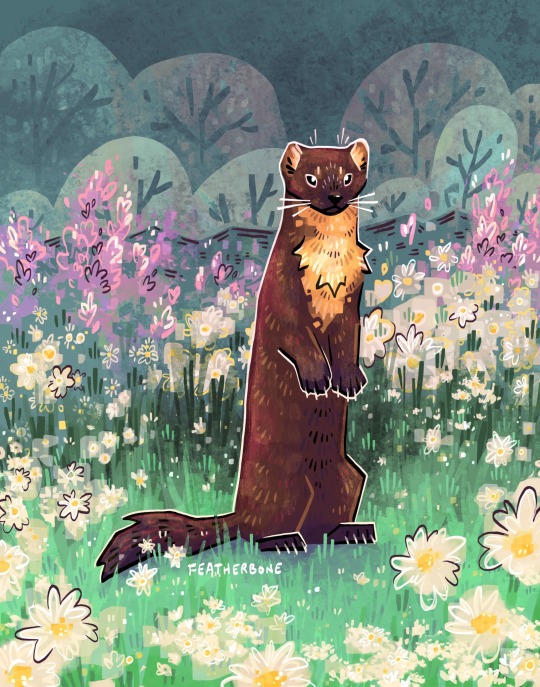
European Pine Marten in a meadow. :-) peace and contentment.
This will be one of the prints for my crow tier Bird Mail members this month!
[ID: an illustration of a pine marten in a field, surrounded by white and purple wildflowers. It is standing upright and looking toward the viewer. End.]
3K notes
·
View notes
Text
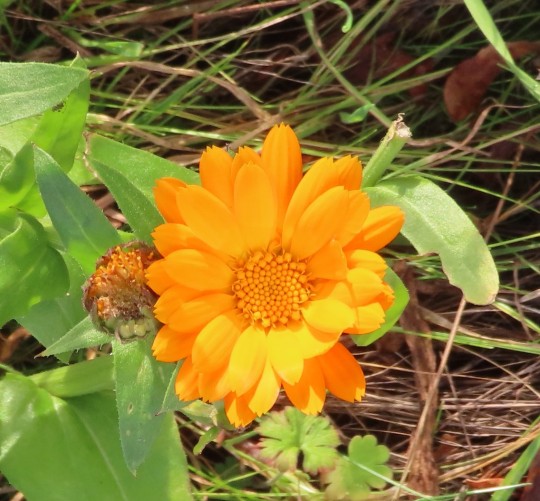

Calendula arvensis (field marigold)
Welcome to January! There may be nothing going on in my flowerbeds but down by the railway tracks, the weeds are doing just fine. This European wildflower, the field marigold, now has worldwide distribution and they seem to like the climate in Vancouver - a lot.
After three unusually sunny, dry summers we're now in the middle of an El Nino winter (read: unusually mild). Under ideal conditions, this Mediterranean plant can bloom year-round. Apparently, these are ideal conditions. Not that I'm complaining. I just love those dayglo orange petals.
#flowers#photographers on tumblr#field marigold#orange#January#fleurs#flores#fiori#blumen#bloemen#Vancouver
116 notes
·
View notes
Text
Flower Moon - May 5, 2023
Ready your gathering baskets and your best shoes for traipsing, witches - it's time to greet the Flower Moon!
Flower Moon
The Flower Moon gives us the fulfillment of the first flush of the Pink Moon, with fragrant blossoms greeting us at every turn and heralding the merry month of May. The floral name for this particular cycle is shared by a number of indigenous nations, include the Algonquin, Anishnaabe, and Dakota. Other names include Budding Moon and Frog Moon (Cree), Planting Moon (Dakota and Lakota), and the Moon of Mulberry (Choctaw).
European names for this moon include Milk Moon (Anglo-Saxon) and Hare Moon (Celtic, allegedly). Modern pagan circles sometimes call it the Grass Moon as well, since the flourishing of grasslands is more common in some areas than the appearance of flowers.
Notes: This year, there is a Penumbral Lunar Eclipse accompanying the Flower Moon. This is a barely visible shadow on the full moon which will be visible largely in the Eastern Hemisphere. Check your local astronomical forecast to see if it will be visible in your area.
This full moon peaks during daylight hours in the Western Hemisphere (around 1:35pm EDT), so the moon may appear to be full on both the nights of the 4th and 5th. It also falls about three-quarters through a Mercury Retrograde, so take whatever steps you deem appropriate.
What Does It Mean For Witches?
As we pass the spring rites and move toward the summer season, it's the perfect time to celebrate your growth and the ways in which you want to flourish. This is the season for romance and love, and not just that which comes when we put on flower crowns and go a-Maying. This is a time to love ourselves as much as each other, and to be reminded of our own beauty and strength. Remember the things you love about yourself and consciously take a moment to remind your loved ones how much you care for them.
It is also a time to celebrate fertility, be it animal, vegetable, mineral, or spiritual. Put new plans into action, start that project you've been meaning to do, embark on that new hobby or activity you wanted to try. If you have a long-term goal or a big project, now is the time to outline your path to completion and plan how to direct your energy so you don't burn out halfway through. Don't hold back - break through the walls of imposter syndrome and anxiety, indulge in your creative urges, and let your inspiration soar. What you choose to plant and nurture now determines what you will harvest later in the year. And above all, remember to have FUN!
What Witchy Things Can We Do?
If you've been feeling the urge to do some flower-related magic, now is the perfect time! Familiarize yourself with the wildflowers in your area and if possible, maybe grab your basket and scissors and go on a foraging trip. Remember to properly identify flowers before picking them, don't overharvest, and don't take anything from private property without permission or from national parks full stop. You can press the flowers with a notebook and something flat and heavy, or you can dry them in hanging bunches, in a cardboard tray, or in a low-temp oven for later use.
This is also a good opportunity to get your hands in the dirt and connect with the land where you live. If there are plants in your care, take a little time to do some pruning and watering. Check them for spring pests and treat where needed. Give them some love - talk to them, sing to them, encourage them to grow tall and strong and abundant. Bless them as you tend their plots and reaffirm your commitment to be a good caretaker.
As an exercise, try making flower crowns, garlands, bouquets, wreaths, or centerpieces using plant correspondences, flower language, or color magic for a desired effect. This can be done with real flowers or silk ones, depending on how long you want to keep them around. Try your hand at making flower water with roses or other blooms - it makes a wonderful base for moon water!
Experiment with recipes for dishes and drinks that use edible flowers too! Whether it's color-changing butterfly peaflower tea, sweet and peppery nasturtium, adorable pressed pansy shortbread cookies, or the tried-and-true comforts of chamomile, flowers have many tasty secrets to offer. Don't be afraid to add botanicals to your health and beauty routine as well! (Just make sure nothing's going to negatively interact with your meds or irritate a pre-existing condition. Safety first!)
Whether you do so with your near-and-dear, your witchy circle, or by yourself, celebrate everything that blooms - including you!
Happy Flower Moon, witches! 🌕🌼
Further Reading:
Flower Moon: Full Moon in May 2023, The Old Farmer's Almanac
Moonrise and Moonset Calculator, The Old Farmer's Almanac
Flower Meanings: Symbolism of Flowers, Herbs, and More Plants, The Old Farmer's Almanac
Floriography, the Language of Flowers, AllFlorists.co.uk
Flower Moon: The Astonishing Full Moon of May 2023, The Peculiar Brunette
How to Dry Flowers 5 Ways, MasterClass, June 7, 2021
DIY Floral Water or Hydrosol, Patti Estep, Hearth and Vine, July 4, 2021
17 Edible Flower Recipes, Better Homes and Gardens, March 8, 2022
Everyday Moon Magic: Spells & Rituals for Abundant Living, Dorothy Morrison
(If you're enjoying my content, please feel free to drop a little something in the tip jar or check out my published works on Amazon or in the Willow Wings Witch Shop. 😊)
#Flower Moon#witchblr#lunar magic#moon magic#witchcraft#lunar calendar#pagan#secular witchcraft#flower magic#green witchcraft
267 notes
·
View notes
Text


Mount Rainier National Park Archives Photos of the Paradise Inn exterior in 1940-41 (top) and NPS Photo of the Paradise Inn in 2018.
The Paradise Inn was built in 1917 by the Rainier National Park Company concessionaire. While built of wood and stone similar to other NPS rustic-style buildings found in the park, the Paradise Inn is more “whimsical” in design and meant to be reminiscent of European alpine resort architecture. The Paradise Inn is part of the Mount Rainier National Historic Landmark District but is also independently designated a National Historic Landmark for its architectural style.
One of the popular features of the Paradise Inn are the lanterns in the lobby painted with wildflowers. When the inn first opened, it had Japanese lanterns in the lobby, as seen in this 1919 photo of the interior:

Mount Rainier National Park Archives Photos of the Paradise Inn interior in 1919 with Japanese lanterns.
The first lampshades featuring wildflowers were added in the 1930s, mostly painted by the wives of rangers at the time, and the current lampshades were painted by retired Chief Naturalist Dale Thompson in 1989.

NPS Photo of wildflower lanterns inside the Paradise Inn, 2018.
Have you visited the Paradise Inn during the summer and viewed the wildflower lanterns in the lobby?
#Mount Rainier History#mount rainier national park#Paradise Inn#Paradise#history#architecture#national historic landmark#national historic landmark district
54 notes
·
View notes
Text




I suppose if any wildflower can be said to embody the bounty and energy of summer, it must be black cohosh (Cimicifuga racemosa, or Actaea racemosa). Anyone who has grown up in Central Appalachia will instantly recognize and connect with the towering "fairy candles" of this woods-dwelling perennial in the buttercup family - some might even suggest a spiritual bond exists between the people of the mountains and the plant. This isn't surprising - black cohosh has a long and storied history as a medicinal herb, dating back to the Native American tribes, who used an extract from its root to treat everything from musculoskeletal pain to snake bites, and continuing with the European settlers, who used it to treat the symptoms of menopause. While there is little evidence from clinical trials indicating the plant's efficacy in treating menopausal symptoms, higher quality studies are being urged and may yet prove the plant's value in supporting female reproductive health. Irrespective of its potential contributions to medicine, black cohosh is the living spirit of Appalachia's summer woods, and one of the most spectacular wildflowers of North America.
#appalachia#vandalia#west virginia#wildflowers#flora#summer#favorite summer wildflowers#traditional medicine#herbal medicine#herbal remedies#black cohosh#fairy candles#black bugbane#black snakeroot#snake hill wildlife management area#cheat river canyon
137 notes
·
View notes
Photo
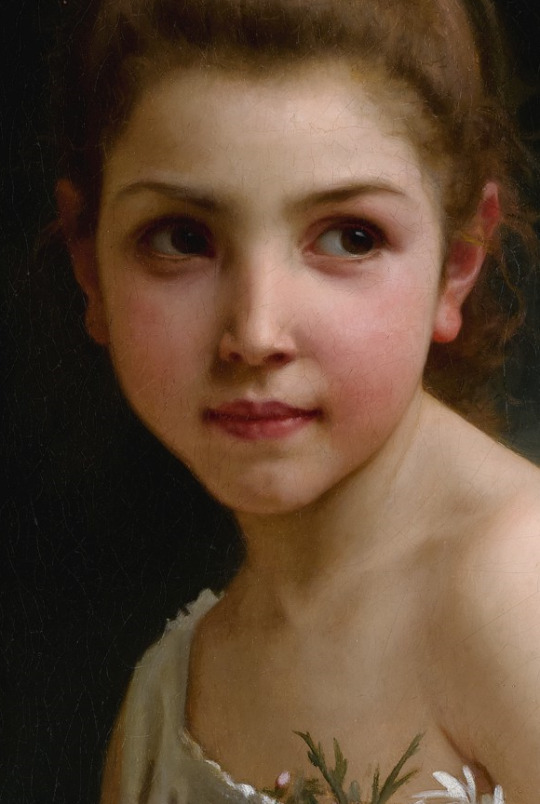
Jules-Cyrille Cavé (French, 1859 - 1946)
Wildflowers, Detail, 1896
#Jules-Cyrille Cavé#Jules Cyrille Cavé#french girl#portrait of a girl#female portrait#art#fine arts#traditional art#public domain#french art#french#france#mediterranean#european#europe#europa#wildflowers 1896#wildflowers#flower girl#cottage core#beautiful art#Aesthetic#black eyes#brown eyes
19 notes
·
View notes
Text
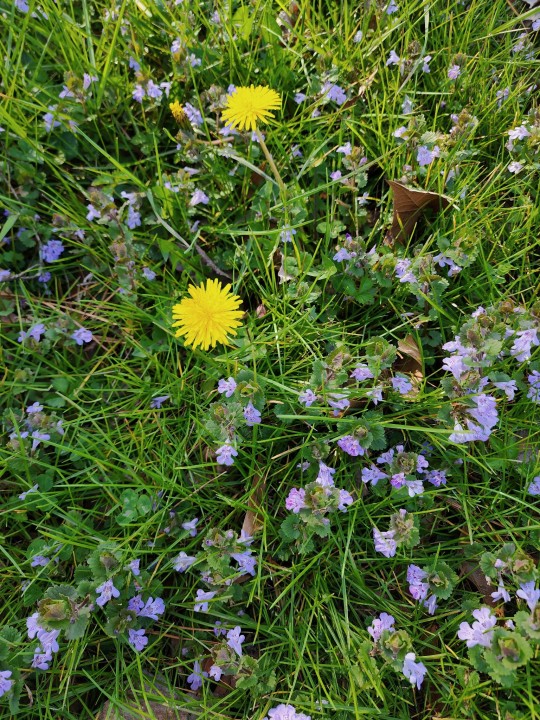
Spring Galaxy
Richmond, Virginia (USA)
Photo from March 30, 2024.
The little purple flowers are known as Creeping Charlie (Glechoma hederacea), spread around the world by European settlers. Like other wildflowers that you see in the grass in early Spring, it's a member of the mint family and visited by bees. Lawncare companies refer to these types of wildflowers as "weeds", but that's the effect of lawn-culture marketing.
24 notes
·
View notes
Note
Ooh, cottagecore discourse! I've always wanted to scream when I saw people claim it is inherently colonialistic, without nuance. To me, a northern European, the main draw has always been a nostalgia to summers at my grandparents' and things like Astrid Lindgren's books. My European grandparents were not colonialists for *checks notes* being farmers and having a garden, and I am not being colonialist when I enjoy seeing wildflowers outside.
What i liked about cottagecore on Tumblr in particular, back when i was really into it some years ago, was how full it was of people posting their lovely and unpolished stuff. Nowadays it feels like the tag has a much bigger fraction of reposted professional photos, which is a shame.
--
108 notes
·
View notes
Photo

Lily-of-the-Valley by liz west on Flickr.
This work is licensed under CC BY 2.0.
#lily of the valley#european lily of the valley#lily-of-the-valley#european lily-of-the-valley#flowers#landscape#wild#green#white#creative commons#creativecommonsplants#plants#plant blog#plant photography#wildflowers#botany#flickr
6 notes
·
View notes